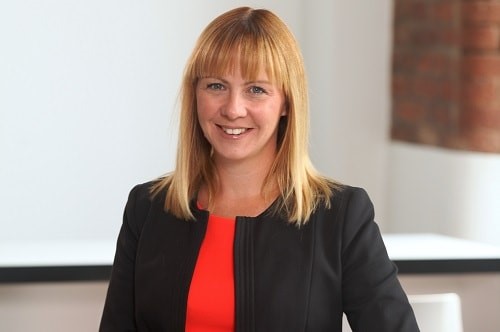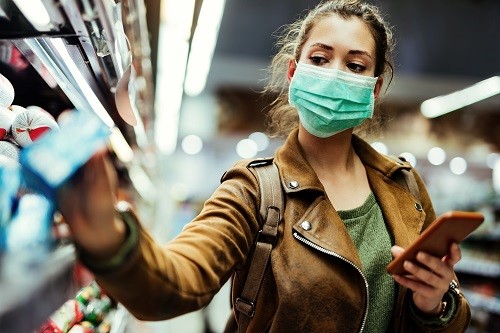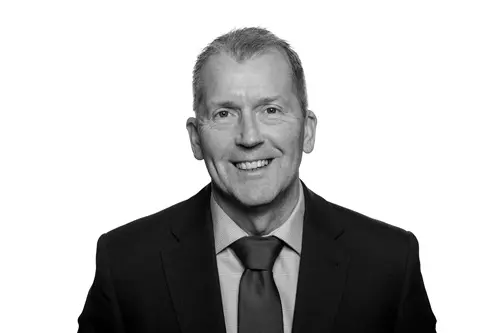When Matt Hancock rose to address parliament on face coverings in mid-July, it followed weeks of speculation that eventually we would all be required to cover up to shop.
Opinion
Face coverings in public: an illogical minefield
From the moment coverings were mandated on public transport and at medical appointments, there was an inevitability about the eventual extension elsewhere. After all, if masks were beneficial in those settings, surely that reasoning applied elsewhere? Apparently not.
We have heard much about “the science” and its evolution. And while most UK workplaces have reopened without a requirement for face coverings, the World Health Organisation (WHO) has for some time been encouraging their use in certain “close contact” working environments.
 Rhian Greaves: "Guidance on masks is fraught with inconsistencies."
Rhian Greaves: "Guidance on masks is fraught with inconsistencies."
Mr Hancock pointed to the disproportionate impact of the pandemic on sales assistants, cashiers and security guards. “The death rate…is 75 per cent higher amongst men and 60 per cent higher amongst women than in the general population…we must protect our shopkeepers”.
His speech highlighted that this is a protective step; not for the wearer but for those around them. Face coverings are not PPE. They are a means of reducing aerosol transmission by the symptomatic, the pre-symptomatic and the asymptomatic.
But the current position is fraught with inconsistencies. Nipping into a convenience store for milk is a five minute task.
Social distancing is easy and the cashier is behind a screen. It is not often crowded and fellow customers are paying similarly fleeting visits. I must now wear a face covering to do this but the shop’s workers do not have to do likewise despite WHO guidance to the contrary.
 Members of the public must wear a face covering in shops, but the shop’s workers do not have to
Members of the public must wear a face covering in shops, but the shop’s workers do not have to
Meanwhile, my recent long-awaited hair appointment saw me happily ensconced in the salon chair for a couple of hours. My stylist wore a visor throughout but there was no obligation for me to reciprocate, save for when entering and exiting the building.
This struck me as odd given the Government guidance for close contact services was the first to recognise that face coverings have a role in “provid[ing] a barrier between the wearer and the client from respiratory droplets caused by sneezing, coughing or speaking”. Surely I am just as capable of producing those drops as the stylist?
I also wonder why face coverings in offices have been so quickly rejected. The Health Secretary says: “when you’re in close proximity with somebody that you have to work closely to, if you’re there for a long time with them, then a mask doesn’t offer that protection”.
Why this is so, is unclear. It also doesn’t explain why coverings are only “advisory” in places of worship and apparently not needed at all if whiling away the hours in a café or restaurant – but an absolute must if you’re buying takeaway.
Face masks have also been dismissed in the Covid-era pub, which has numerous measures in place but is also a place where people speak louder, become more animated and after a few drinks their estimation of “one metre plus” becomes muddled to say the least. If shop workers deserve protection, surely their bar tending counterparts do too? Perhaps in limited circumstances when ordering.
It feels like the economic imperative, rather than the science, is informing the policy and yet there must be something in the science, hence the swift introduction of masks in all enclosed public spaces to help manage the recent spike in Covid-19 cases in Blackburn.
There is clearly also a tension within Government ranks at the imposition that accompanies a requirement to don a face mask and yet the public has shown remarkable responsiveness, just as they did with the initial lockdown. A survey of travellers in early June found that around 40 per cent were wearing masks. When the same question was repeated a month later, the figure was 90%.
Surely it is time for the government to review its guidance and address some of these inconsistencies head on, mandating masks for enclosed public spaces and where it chooses not to do so, giving a fully reasoned explanation why not?
Rhian Greaves is associate partner Pannone Corporate LLP
Government guidance on face coverings: when to wear one here
OPINION

Alcohol – the negative impact on work and workplaces
By Dr Jamie O’Halloran, IPPR on 02 January 2026
New IPPR research shows that most employees expect their employer to play an active role in reducing alcohol harm. Senior staff, in particular, believe employers have an even greater responsibility. Yet in practice, many employees say they do not see their employer taking meaningful steps to minimise harm.

Beyond 2025: The journey towards a safer world
By Mike Robinson FCA, British Safety Council on 22 December 2025
As 2025 draws to a close, we reflect on a year of success and safety. It also allows us to look forward to the coming year, recognising that with each new year comes the unbridled hope and opportunity to create the safest year in human history for the workers of the world.

How to create a neuroinclusive workplace
By John Robinson, Schofield Sweeney on 09 December 2025
The modern workplace is a diverse environment. Most workforces will be made up of individuals representing the majority of the groups protected under the Equality Act 2010.



